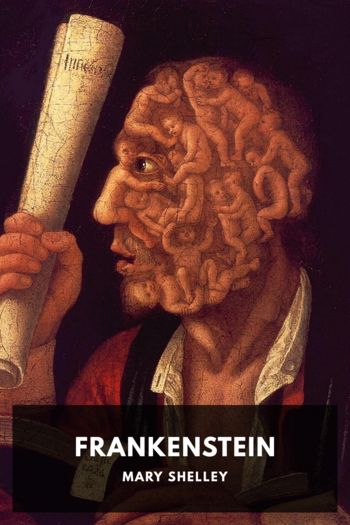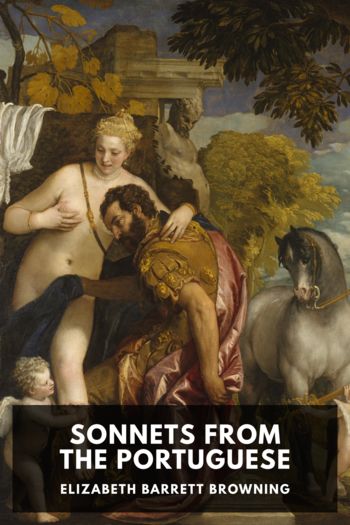Two-Way Mirror, Fiona Sampson [children's ebooks online .txt] 📗

- Author: Fiona Sampson
Book online «Two-Way Mirror, Fiona Sampson [children's ebooks online .txt] 📗». Author Fiona Sampson
North America still has an exaggerated postcolonial respect for British writers. But Elizabeth is also repeatedly published by Graham’s Magazine, which is edited by Cornelius Mathews, a young New York-based activist for a home-grown literature. In 1845 Mathews will explicitly align himself with anti-aristocratic Young America politics, named in part after the Young Italy movement (of which Elizabeth will herself become a passionate advocate, even a kind of celebrity supporter). Young America, based largely in the cities of the north, will be pro-immigration and in favour of rights for all, free trade, and international republicanism; making it a more radical version of the British Whig thought espoused by the Barretts.
But in 1842 Mathews is still working with colleagues to create the North American literary culture that will enable the careers of George Bancroft, Nathaniel Hawthorne, Herman Melville and others. Elizabeth’s poetry is welcomed in these circles, despite her nationality, because she shares their political and poetic ideas. To American peers her writing is fresh and modern. And Elizabeth, ever the idealist, responds to both political appeal and personal friendship. Mathews, eleven years her junior, is perhaps her ideal correspondent, safely on the other side of the Atlantic and unlikely to drop in unannounced. She praises his writing’s ‘vital sinewy vigour’ in print; and tells James Russell Lowell, another member of his circle, ‘I love the Americans & America for the sake of national brotherhood & a common literature & I honor them for the sake of liberty & noble aspiration—& I am grateful to them, .. very grateful, .. for their kindness to me personally as a poet.’
For despite her growing international reputation, as 1844 opens Elizabeth is feeling isolated in the ‘dark and solitary room’ where her most frequent companion is her maid: she claims a ‘ “fine madness” for turning servants into friends’. Traces remain of depressive guilt about Bro’s death, that ‘Bitter anguish of bestowing evil, unmitigated evil, where you wd only cause good’. She’s also suffering from chronic pain, and has begun corresponding with fellow-Northumbrian Harriet Martineau, the distinguished feminist social theorist who in the same year publishes her autobiographical collection of essays, Life in the Sickroom: Essays by an Invalid. Also housebound, and suffering from what’s believed to be an incurable uterine tumour, Martineau is one of the few able to understand how Elizabeth feels physically:
How entirely I agree with you about severe pain!—about its lowering & perverting influences! Nobody who ever was familiar with very severe pain cd say the good of it that one sees said in books. How it does baffle one’s will! […] Your picture of yourself looks cheerful & pretty; but I am not one to be deceived by your religious cheerfulness into an oversight of the suffering wh. lies beneath.
The women, who moreover share a free-thinking religious Nonconformism, discuss a topic of absorbing interest to them both: mesmerism – hypnotherapy – and its possible use as a cure for physical illness. In November, Martineau, apparently miraculously cured of years of suffering, will publish a controversial series of letters in The Athenaeum advocating it as a cure. Though Elizabeth experiences no such radical improvement, she remains longingly enthusiastic about this and all things supernatural, and will support her friend in the face of widespread public scepticism.
At times, she even seems to float into a psychological twilight. In her room, drawn blinds and insomnia blur the difference between dreamlike days and nights, and colour her imagination: ‘I dare to perceive or imagine the grandeur of spiritual subjects—spirits & angels—spreading their faint shadowless glories over a vast surface.’ She’s still taking opium, ostensibly for difficulty sleeping – it’s likely the dose was increased in Torquay – and admits to Martineau that it produces ‘fairy visions’. Since her return home there’s been a distinctly opiate flavour to her at times near-daily correspondence with Miss Mitford, with its disinhibited self-disclosure and obsessional working over of details. Besides, not all her visions are ‘fairy’. Fretting over John Kenyon – who for weeks exchanges visits with the rest of the family while somehow failing to make it to her own room – Elizabeth worries about possible scandal in his private life, and is yet more concerned by his plan to buy a villa in Torquay, which she depicts as locked in a grotesque danse macabre:
There is not such a dancing, fiddling cardplaying gossipping place in all the rest of England as Torquay is—there is not such a dissipated place, in the strongest sense. And it’s a ghastly merriment. Almost every family has a member either threatened with illness or ill. Whoever is merry, is so in a hospital. They carry away the dead, to take in benches for the company. […] [T]he ghastliness of the collision there between life & death, merriment & wailing […] has made my flesh creep sometimes. […] A woman in the last agony in one house—a corpse laid out in another—& the whole of surviving Torquay dancing intermediately!
Since her return to Wimpole Street, an odd mixture of superstition and religious mysticism, ‘Mr Haydon’s mystical way of talking of the “poetry of dark”’, has started to overtake the appeal of transcendence:
I have recognized again & again the charm of the mystical which is in fact the voice





Comments (0)